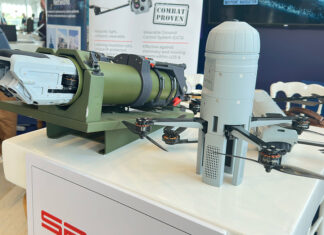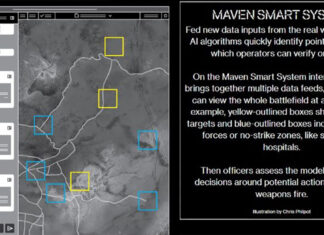Historically, military forces favored battles in open terrain, as the confines of urban terrain, forests, or narrow mountain passages are the defender’s forte. Therefore, when urban combat is unavoidable, the fighting force must be well-prepared and equipped to tackle the challenges and take advantage of the situation. The urban environments present unique challenges that require advanced situational awareness for effective operations. The urban battlespace is highly advantageous to the dismounted defender. The dense and complex terrain, comprising built-up or ruined landscapes, along with a complex maze of boulevards, streets, and paths, provides multiple points of engagement by mines, IEDs, booby traps, and ambushes. Battled cities are full of debris, providing many hideouts for small forces.
Tall buildings dominate their surroundings, offering vantage positions for snipers and anti-tank teams. Underground features (specially prepared tunnels or sewers) allow defenders to exploit the subterranean dimension. demand sophisticated strategies and technologies to ensure mission success and minimize collateral damage. This article delves into the critical importance of situational awareness in urban battlespaces, exploring the latest innovations and methodologies that empower military forces to navigate, observe, and respond with precision and agility. Through enhanced situational awareness, commanders and soldiers can achieve superior operational effectiveness, safeguarding both their objectives and the lives of non-combatants.
Soldiers are required to carry out complex missions on this terrain. Facing enemy ambushes or infantry forces in close combat, dismounted forces are required to conduct tough Close Quarters Combat (CQB) where conventional technology has little to offer. Situational Awareness is key to maintaining an advantage by denying the enemy the element of surprise and providing the combined arms force the opportunity to deploy the most effective means against threats. Unlike previous generations, where technologies providing situational awareness were located at the brigade or division, lagging hours or even days from what was happening at the forward line, today’s SA requires real-time efficiency and is designed to provide the tank commander and infantry team leader the information they need without delay.

The Orion is a typical device that enables situational awareness at the dismounted team level. Asio Technologies developed this rugged, smartphone-like handheld device to enable off-grid and on-grid mission planning, real-time navigation, and enhanced situational awareness. Orion uses a Geographic Information System (GIS) database and Augmented Reality (AR) to display points of interest relative to the user’s position.
Orion is designed to assist individual soldiers and commanders up to the battalion level, allowing them to exchange real-time information about targets, coordination, and their own locations. It securely interfaces with the company’s Lynx Tactical hand-held multi-function display. This day/night augmentation system provides dismounted troops with powerful machine vision algorithms to enhance the tactical operation and situation awareness and reduce cognitive load. The system features daylight video IR imaging and a rangefinder. The latest version is smaller, lighter, and more advanced. It incorporates enhanced features with a ‘Geo Fusion Core’ that offers image-to-map transformation to augment geo-reference map symbols in the visual picture. These functions leverage AI features to assist coordination and targeting.
Communication in an urban and ruined area is challenging. Electronic devices must be reliable and available in all operating scenarios for the warfighter to trust them. Mobile Ad-hoc Networks (MANET) help provide such services connecting sensors, command and control devices, drones, and weapons to warfighters and first responders. Creomagic, an Israeli MANET pioneer, has developed an autonomous, cognitive SDR and dual waveform capabilities called CreoNet. This radio communications technology provides mission-critical teams with more reliable, secure, and resilient connectivity. The latest version offers enhanced EW features, including advanced cognitive SDR and dual waveform.
CreoNet cognitive software-defined radios (CSDR) provide fully encrypted mesh networks by continuously analyzing the electromagnetic spectrum, detecting clear channels, and identifying potential threats and interference. Then, the CreoNet radios network or network segment automatically switches to the clear channel without operator intervention, maintaining connectivity continuity and reliability across the network. The system employs machine learning to detect patterns in the frequency spectrum that indicate the presence of interference and other sources of noise and then automatically adjusts their parameters by switching to alternative frequencies, modulation techniques, or waveforms. CreoNet can simultaneously operate across two waveforms, creating two tactical bubbles – one for broadband information transmission and another providing secure and immune tactical awareness mode through low probability of detection and interference. Applications extend through personal tactical radios for special forces and first responders, as well as ground solutions for robotics, manned aerial networks, and UAVs.
Voice is the natural form of human communication, but in combat, hearing is impaired by deafening noise. To maintain audible communications and minimize damage, soldiers rely on in-ear sound protection and radio headsets such as the gear produced by Silynx Communications. Originally developed for special forces use, the system is now used by military and law enforcement forces in 50 countries. It provides the warfighter full control of multiple radios, mobile phones, intercoms, and satellite phones, offering clear hearing of talk and radio even in the high ambient noise levels encountered on a battle scene. The system supports a bone-conducting microphone, enabling users to ‘talk through their ears.’
Further Reading:






















